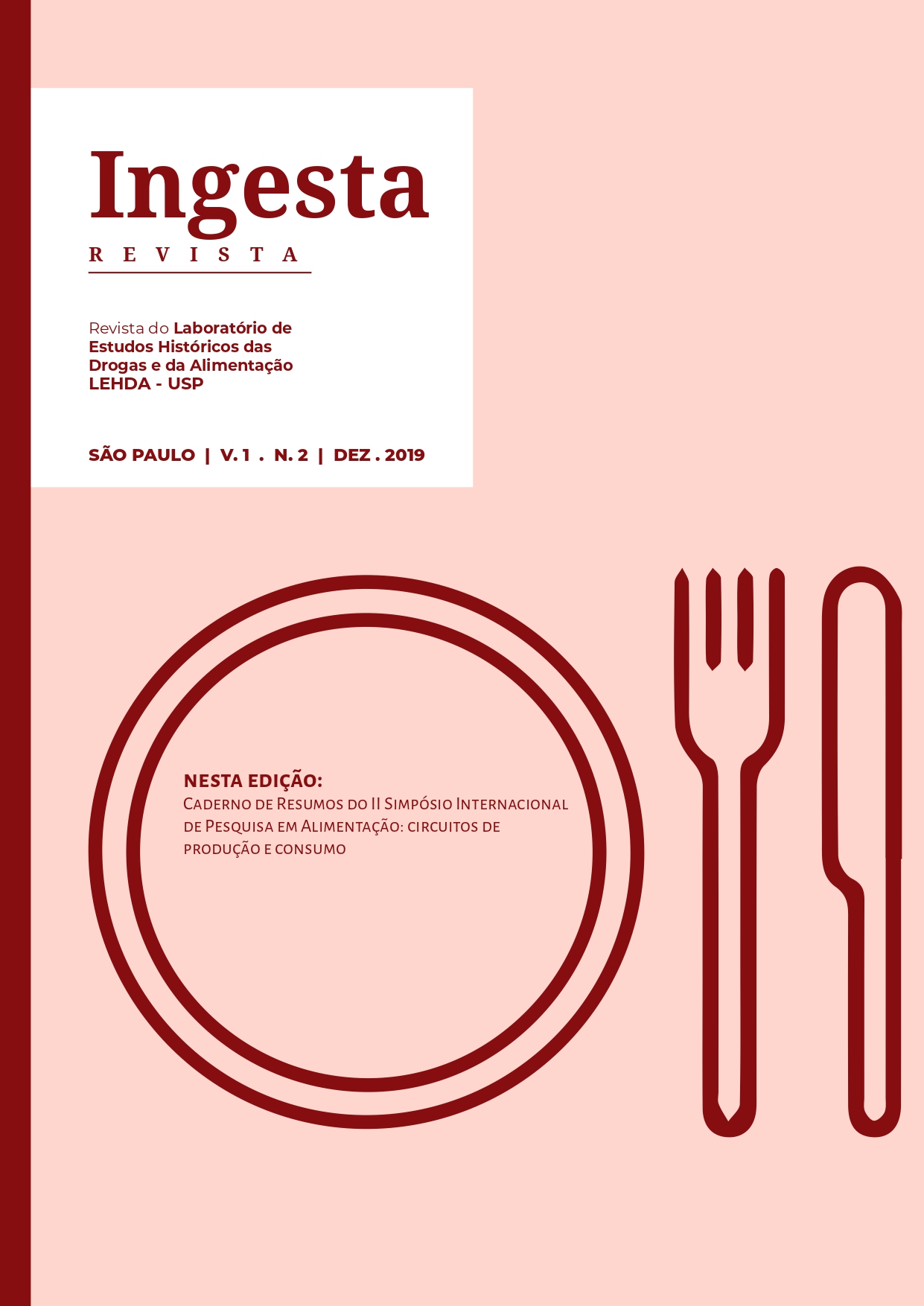Entre alimentos e drogas
especiarias da Antiguidade até o início da Idade Moderna
DOI:
https://doi.org/10.11606/issn.2596-3147.v1i2p73Palavras-chave:
Especiarias, Receitas culinárias, História da alimentação, DrogasResumo
From 1st to 17th centuries, spices have been a commodity as well as a necessity for the Western Europe. These “aromatic items of commerce with a high unit cost... imported from distant lands”, as they are defined by Paul Freedman, included many dry products that were mainly culinary ingredients, but also perfumes of high quality which could be used in cooking. Most of spices were supposed to have medical properties too: they were drugs, in the wide meaning that the Ancient Medicine gave to this term. The medical impacts of spices partly explain how, in 14th and 15th centuries, Far East spices offered the wider range of tastes and scents that European cuisine has ever known. But even when the French Cuisine has got rid of eastern spices from the middle of the 17th century, these ones remained quite important in a medicine that kept alive the principles of the Ancient Medicine. How the changing tastes affected the discourse on spices? We will answer this question through a long-term study of cook recipes, medical instructions and travel writings.
Downloads
Downloads
Publicado
Edição
Seção
Licença
Autores que publicam nesta revista concordam com os seguintes termos:
- Autores mantém os direitos autorais e concedem à revista o direito de primeira publicação, com o trabalho simultaneamente licenciado sob a Licença Creative Commons Attribution que permite o compartilhamento do trabalho com reconhecimento da autoria e publicação inicial nesta revista.
- Autores têm autorização para assumir contratos adicionais separadamente, para distribuição não-exclusiva da versão do trabalho publicada nesta revista (ex.: publicar em repositório institucional ou como capítulo de livro), com reconhecimento de autoria e publicação inicial nesta revista.
- Autores têm permissão e são estimulados a publicar e distribuir seu trabalho online (ex.: em repositórios institucionais ou na sua página pessoal) a qualquer ponto antes ou durante o processo editorial, já que isso pode gerar alterações produtivas, bem como aumentar o impacto e a citação do trabalho publicado (Veja O Efeito do Acesso Livre).



